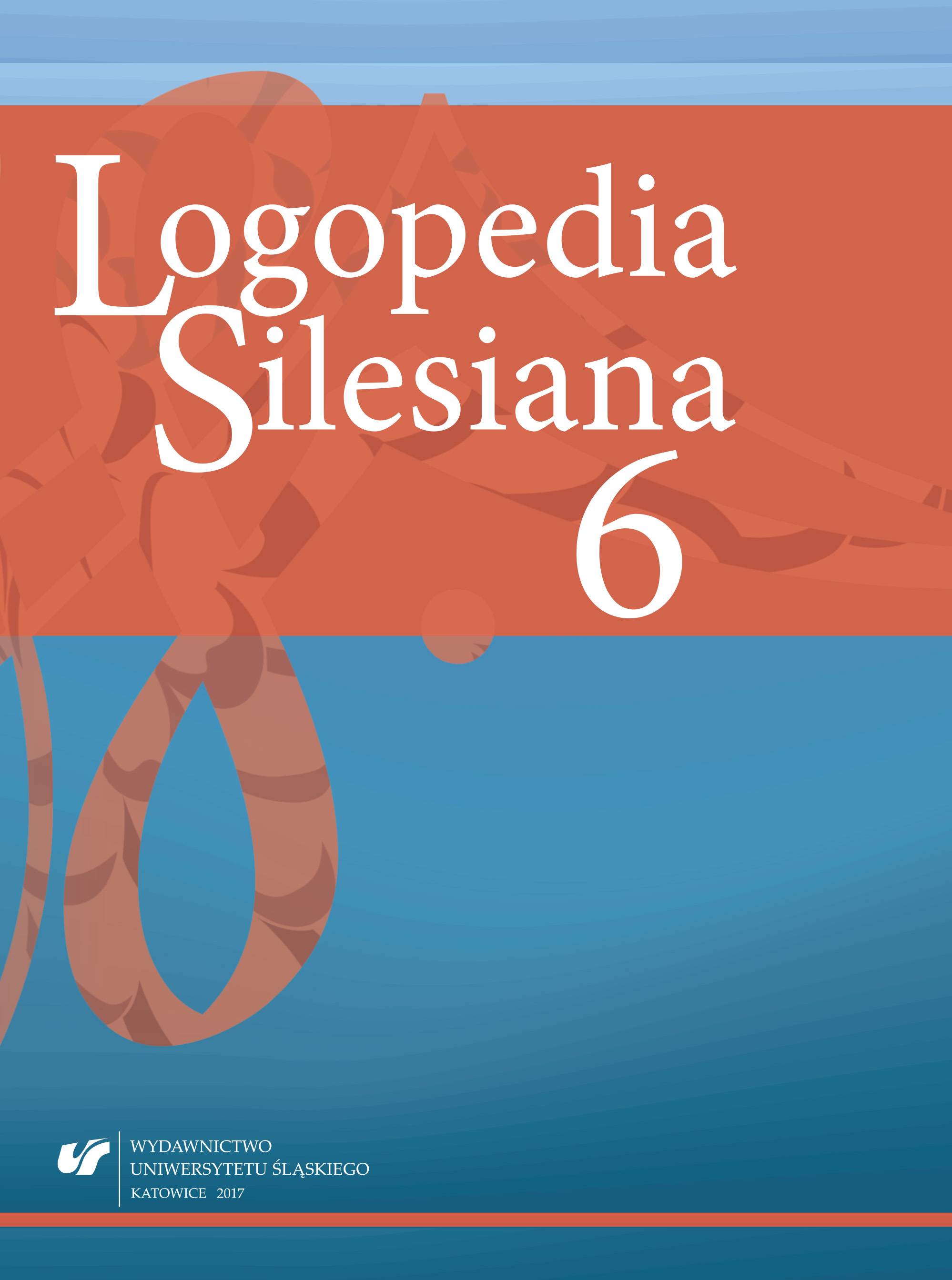Duch W.: Amuzja wyobrażeniowa. „Neuroestetyka Muzyki” 2013, nr 2, s. 247–270.
Google Scholar
Gamrat M.: Analogie między muzyką i językiem według „Encyclopédie pittoresque de la musique” (1835). „Res Facta Nova” 2010. http://www.lmm.edu.pl/pdf/0007.pdf [data dostępu: 16.12.2015].
Google Scholar
Kantyka K.: Logorytmika jako forma wsparcia dzieci ze specjalnymi potrzebami edukacyjnymi. „Terapia przez Sztukę” 2014, nr 1 (5), s. 13–19.
Google Scholar
Kilińska‑Ewertowska E.: Badania nad zastosowaniem ćwiczeń muzyczno‑ruchowych w rehabilitacji dzieci z zaburzeniami mowy. Gdańsk, Państwowa Wyższa Szkoła Muzyczna, Zakład Wydawnictw i Informacji Naukowej 1981.
Google Scholar
Kilińska‑Ewertowska E.: Logorytmika. Lublin, Wydaw. Uniwersytetu Marii Curie‑Skłodowskiej 1987.
Google Scholar
Kowalska A.: Metodyka kształtowania elementów prozodycznych w wypowiedziach dzieci z upośledzeniem słuchu. Lublin, Wydaw. Uniwersytetu Marii Curie‑Skłodowskiej 1989.
Google Scholar
Kwaterkiewicz M.: „Wpływ ćwiczeń muzycznych i muzyczno‑ruchowych na rozwój kompetencji prozodycznych dzieci pięcio‑, sześcioletnich” [praca licencjacka]. Opieka nauk. M. Wysocka. Uniwersytet Marii Curie‑Skłodowskiej 2016.
Google Scholar
Łobocki M.: Wprowadzenie do metodologii badań pedagogicznych. Kraków, Impuls 2001.
Google Scholar
Maszke A.W.: Metody i techniki badań pedagogicznych. Rzeszów, Wydaw. Uniwersytetu Rzeszowskiego 2008.
Google Scholar
Sloboda J.A.: Umysł muzyczny. Poznawcza psychologia muzyki. Warszawa, Wydaw. Akademii Muzycznej im. Fryderyka Chopina 2002.
Google Scholar
Stadnicka J., Stadnicki A.: Terapia dzieci muzyką, ruchem i mową. Warszawa, Wydawnictwa Szkolne i Pedagogiczne 1998.
Google Scholar
Szpyra‑Kozłowska J.: Wprowadzenie do współczesnej fonologii. Lublin, Wydaw. Uniwersytetu Marii Curie‑Skłodowskiej 2002.
Google Scholar
Walencik‑Topiłko A.: Wykorzystanie elementów rytmiki w terapii logopedycznej. W: Rytmika w kształceniu muzyków, aktorów, tancerzy i w rehabilitacji. Red. B. Ostrowska. Łódź, Akademia Muzyczna im. Grażyny i Kiejstuta Bacewiczów 1999, s. 142–146.
Google Scholar
Walenick‑Topiłko A., Wysocka M.: Logorytmika w terapii surdologopedycznej. W: Surdologopedia. Teoria i praktyka. Red. E. Muzyka‑Furtak. Gdańsk, Harmonia Universalis 2015, s. 343–353.
Google Scholar
Waryszak M.: Uwarunkowania wypowiedzi emocjonalnych osób w normie biologicznej i osób z zaburzeniami mowy. „Logopedia Silesiana” 2014, s. 133–142.
Google Scholar
Whalley K., Hansen J.: The role of prosodic sensitivity in children’s reading development. “Journal of Research in Reading” 2006, vol. 29, no. 3, s. 288–303.
Google Scholar
Wysocka M.: Prozodia mowy w percepcji dzieci. Lublin, Wydaw. Uniwersytetu Marii Curie‑Skłodowskiej 2012.
Google Scholar
Wysocka M.: Percepcja struktur prozodycznych i muzycznych w aspekcie rozwojowym. W: Język – interakcja – zaburzenia mowy. Metodologia badań. Red. T. Woźniak, A. Domagała. Lublin, Wydaw. Uniwersytetu Marii Curie‑Skłodowskiej 2007, s. 324–351.
Google Scholar
Wysocka M.: Prozodia mowy – problemy opisu. W: Logopedia artystyczna. Red. B. Kamińska, S. Milewski. Gdańsk, Harmonia Universalis 2016, s. 213–231.
Google Scholar
Wysocka M.: Rozwój kompetencji prozodycznej. W: Język – człowiek – społeczeństwo. Red: J. Panasiuk, T. Woźniak. Lublin, Wydaw. Uniwersytetu Marii Curie‑Skłodowskiej 2013, s. 861–874.
Google Scholar
Wysocka M.: Zaburzenia prozodii mowy. W: Logopedia. Teoria zaburzeń mowy. Red. S. Grabias, Z.M. Kurkowski. Lublin, Wydaw. Uniwersytetu Marii Curie‑Skłodowskiej 2012, s. 165–181.
Google Scholar



 10.31261/LOGOPEDIASILESIANA
10.31261/LOGOPEDIASILESIANA